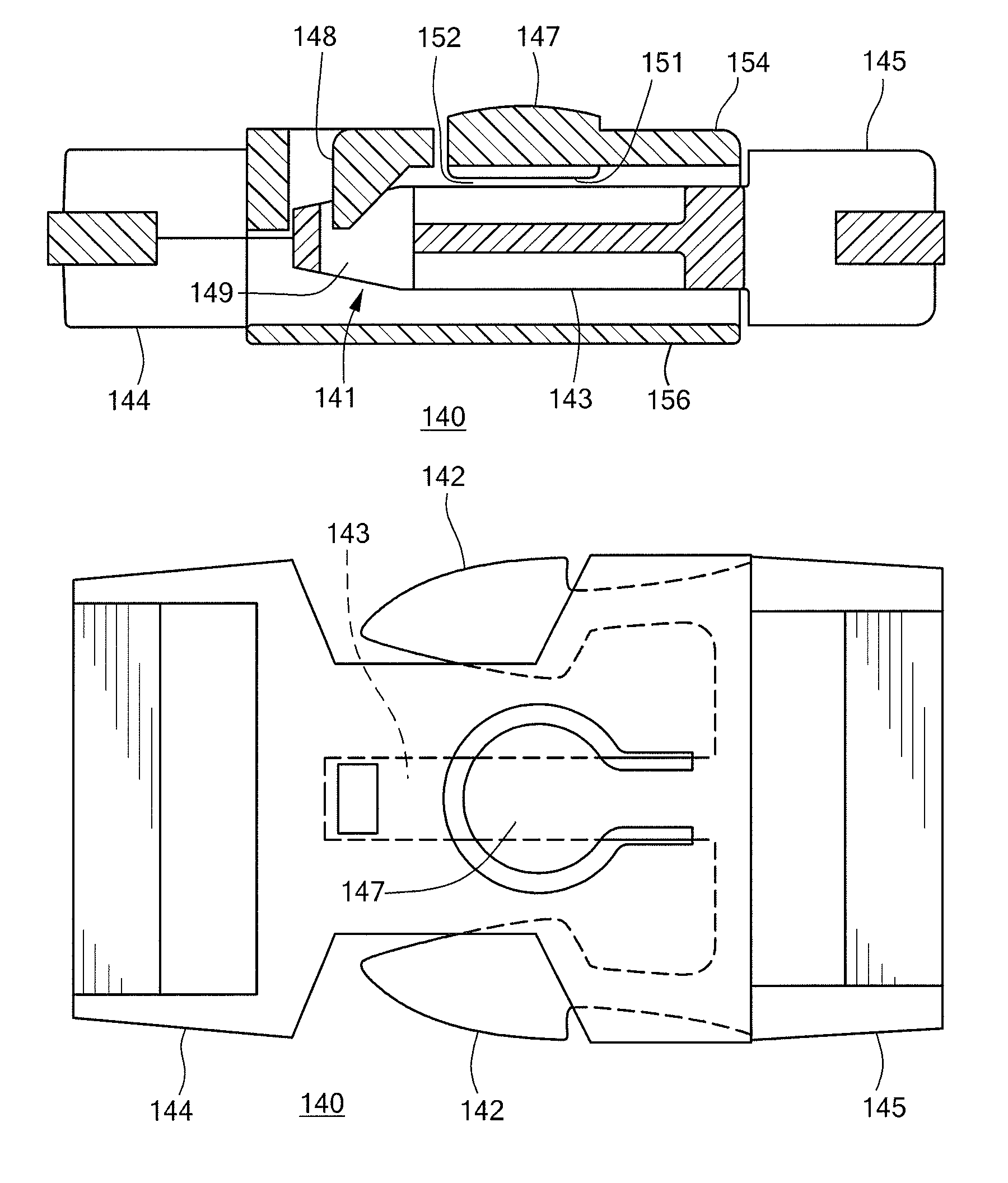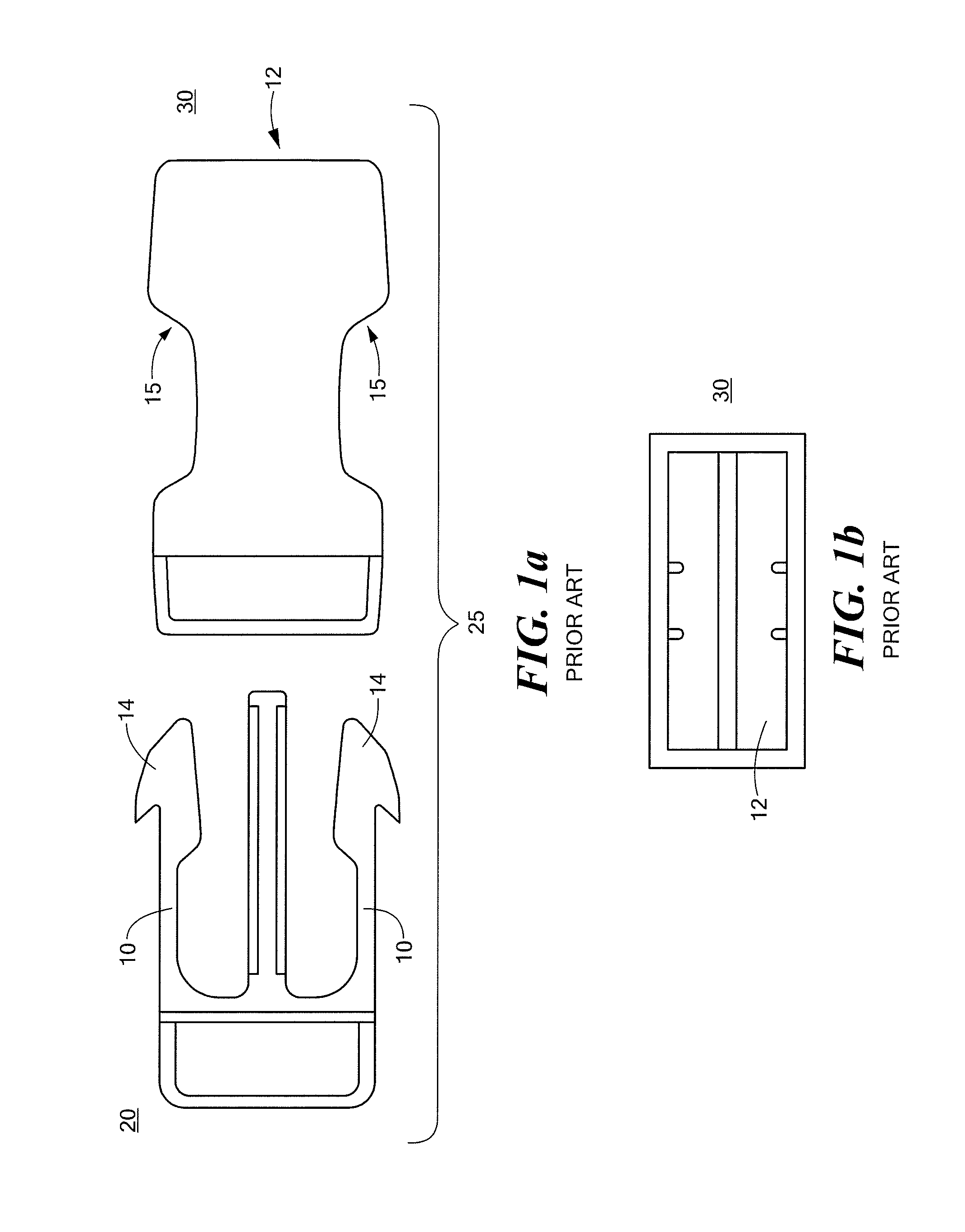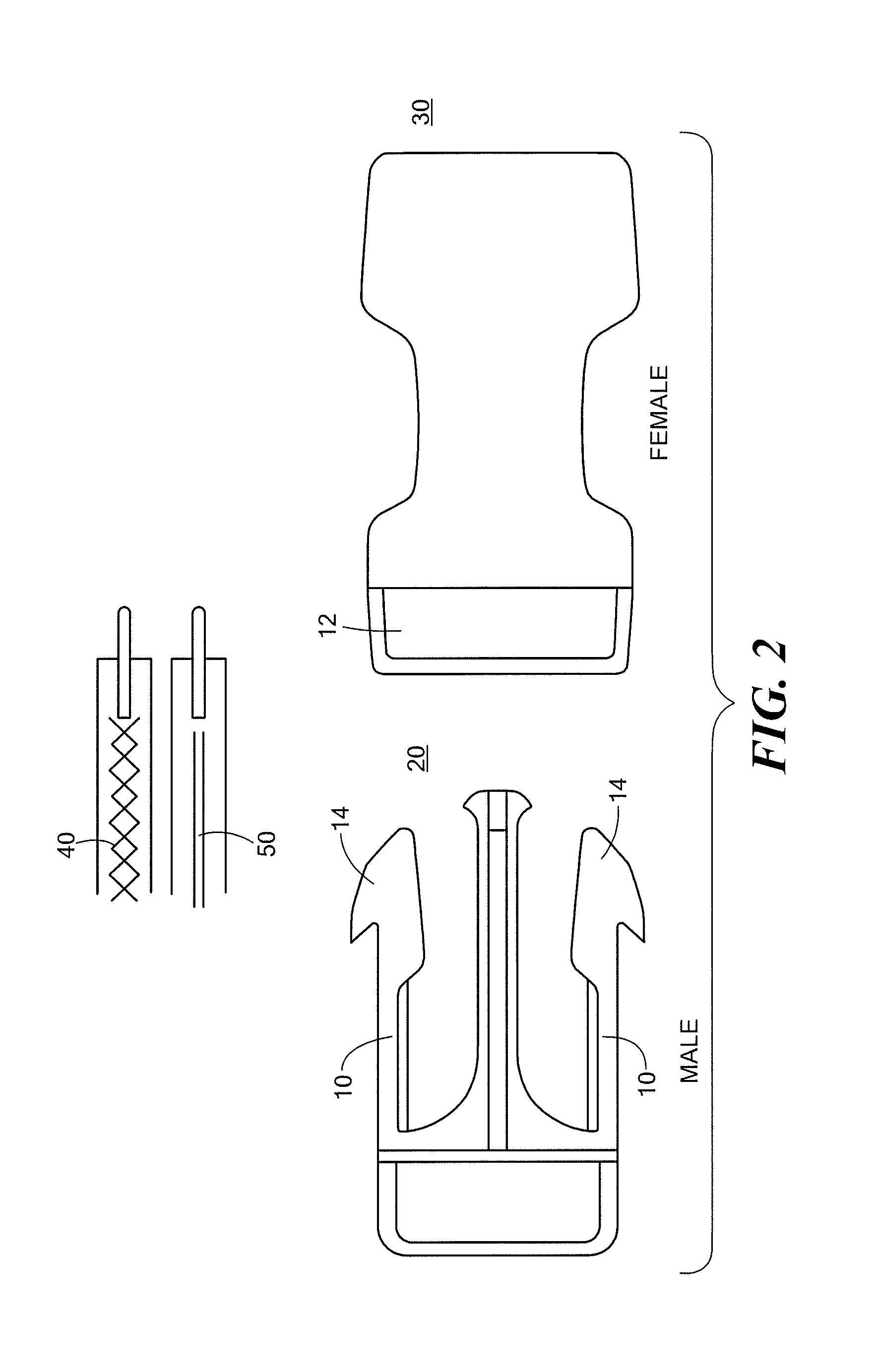Structure and material for a child resistant buckle
a technology of structure and material, applied in the direction of fastenings, garment fasteners, press-button fasteners, etc., can solve the problems of buckles of the 330 patent are difficult to manufacture, buckles that are prone to jamming, etc., to improve the child-resistant features of the buckle, increase the resistance to displacement, and maintain the effect of child-resistant features
- Summary
- Abstract
- Description
- Claims
- Application Information
AI Technical Summary
Benefits of technology
Problems solved by technology
Method used
Image
Examples
Embodiment Construction
[0053]The entire contents of U.S. Pat. Nos. 6,604,265 and 6,618,915 and U.S. application Ser. Nos. 60 / 232,546, 60 / 270,996, 60 / 421,932, 60 / 605,855, 60 / 641,346, 10 / 693,964, 10 / 811,168, 11 / 090,696 and 11 / 205,295 are hereby incorporated herein by reference.
[0054]The present invention provides a simple child safety buckle with design, structure and material selection features that represent a substantial improvement over the prior art. The buckle is resistant to tensile, impact and compressive forces, and is operated conventionally to unclasp the buckle. The buckle may realize one or more child resistant features, including increased force or displacement applied to unclasp the buckle, non-operative ranges of actuation, multiple latch mechanisms, and so forth.
[0055]Referring to FIGS. 2-6, in which like elements are designated with like reference designations, child resistant features for seat belt buckles are illustrated. According to one embodiment, side arms 10 are reinforced with a st...
PUM
 Login to View More
Login to View More Abstract
Description
Claims
Application Information
 Login to View More
Login to View More - R&D
- Intellectual Property
- Life Sciences
- Materials
- Tech Scout
- Unparalleled Data Quality
- Higher Quality Content
- 60% Fewer Hallucinations
Browse by: Latest US Patents, China's latest patents, Technical Efficacy Thesaurus, Application Domain, Technology Topic, Popular Technical Reports.
© 2025 PatSnap. All rights reserved.Legal|Privacy policy|Modern Slavery Act Transparency Statement|Sitemap|About US| Contact US: help@patsnap.com



